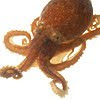A few weeks ago, we got fed up with the bland and generic shrubberies in the front yard. Well, we like the shrubberies just fine. They are healthy and relatively symmetrical, so we have no objection there. But the Ms. wants flowers and color. Quoth the Ms.: "Color is what makes me go 'woo'."
So, we we found some of these awesome purple coneflowers, a.k.a echinacea purpurea, and put them in between the shrubs. Coneflowers are like the redneck cousins of daisies. They're wildflowers, and not as popular in gardens because of their big orange seedheads.
We quickly noticed, within 30 minutes of planting them, that local bees (I assume they are local and not out of towners) were big fans. Well, it IS autumn, and there's not a lot of pollen to be had. I wonder if the bees would love us so much if it was Spring. Here's a bee making overtures to our new plant.
Well, yesterday we were swarmed with butterflies as well.
I think there are 4 butterflies and 2 bees on this one slutty plant.
Traditionally, Echinacea was used to help heal insect bites, diphtheria, typhoid, blood poisoning, and other diseases such as tuberculosis that affect the body's immune system. The American Botanical Council states that "Echinacea may be of value for any infection, chronic or acute, but especially where there is not long-term immune deficiency or dysfunction." (Herbalgram #30 supplement, 1994).
But I think they're too attractive to eat, and the insects have apparently called dibs.
Modernize your Kitchen with Austin Home
5 years ago









